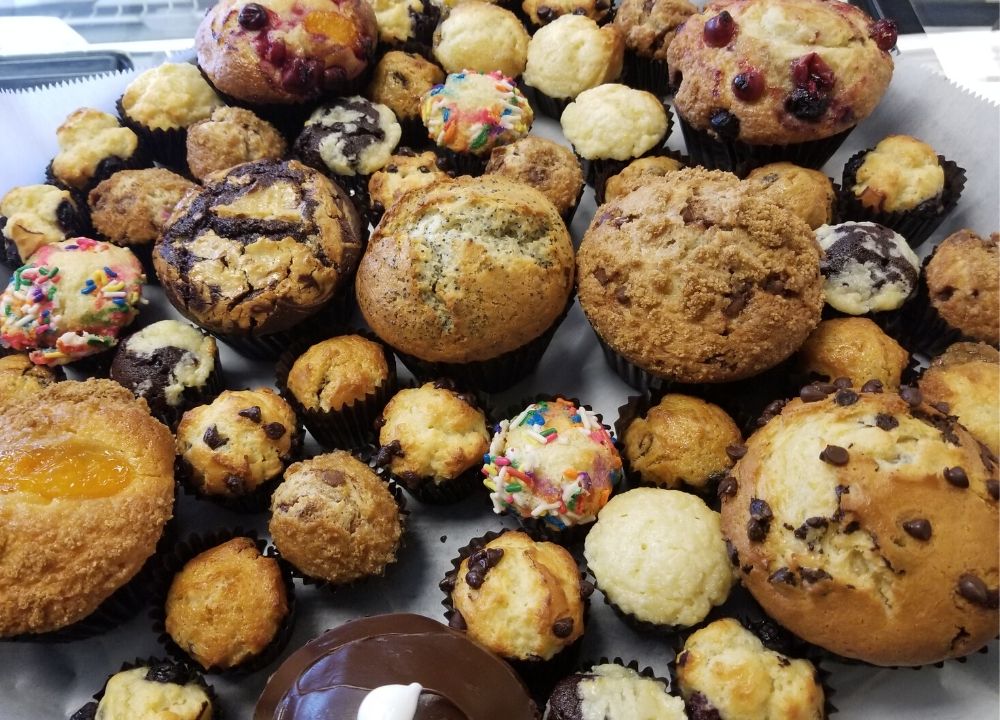Make Your Event Special with Birthday Catering Maddington
Make Your Event Special with Birthday Catering Maddington
Blog Article
Recognizing the Art of Bakery Products: From Newly Baked Breads to Alluring Pastries and Finger Foods
From the scientific research behind the perfect loaf of bread, where fermentation and gluten development play critical functions, to the skill needed for producing split pastries, each facet exposes an engaging narrative of workmanship. The versatility of finger foods shows just how flavor and texture can be skillfully integrated to involve varied preference preferences.
The Scientific Research of Bread Making
At the heart of every loaf of bread exists a fascinating interaction of chemistry and biology. The procedure of bread making begins with the mix of flour, water, yeast, and salt-- each active ingredient playing an important role in the last product.
Yeast, a living microorganism, ferments the sugars existing in the flour, creating carbon dioxide and alcohol in the procedure. The carbon dioxide gas creates bubbles in the dough, causing it to rise and create a light structure. The temperature level and moisture throughout fermentation significantly influence yeast task and, consequently, the bread's flavor and structure.

Mastering Pastry Strategies
Exactly how can one achieve the delicate balance of appearance and flavor that specifies phenomenal pastry? Mastering pastry techniques needs a deep understanding of ingredients, techniques, and the science behind them. Essential to this craft is the option of top notch ingredients-- flour, butter, sugar, and eggs-- each playing a critical function in the end product's taste and appearance.
The technique of lamination, which entails folding layers of dough and butter, creates the preferred flakiness in breads like croissants and puff bread. Accuracy in temperature is crucial, as butter needs to stay cool to ensure ideal layers. Correct mixing methods, such as the creaming method for cakes, make certain also incorporation of air and fat, resulting in a light and airy crumb.
Additionally, keeping the right humidity levels during cooking can dramatically affect the outcome, making sure that breads climb appropriately and attain that golden-brown finish. Finally, the art of pastry also demands persistence and method; each effort enhances one's ability and understanding of the detailed equilibrium called for to create irresistible pastries that delight the senses. Mastery in these methods eventually distinguishes a proficient bread cook from an amateur.
Kinds Of Finger Foods
The world of culinary thrills expands beyond pastries to encompass a wide array of finger foods, which are commemorated for their comfort and adaptability. These bite-sized treats are ideal for celebrations, supplying a selection of tastes and structures that accommodate varied tastes buds.

On the sweeter side, tiny tarts and bite-sized cupcakes provide a wonderful coating to any meal, interesting those with a sweet tooth. Cheese and charcuterie boards offer as a sophisticated choice, allowing guests to personalize their bites with a variety of meats, cheeses, fruits, and nuts.
Flavor Profiles in Baking
Baking is an elaborate dance of flavor profiles that combines sweet, savory, and umami notes to create a harmonious experience for the taste. Recognizing these accounts is crucial for bakers looking for to boost their developments.
Sweet taste typically works as the foundation in baked goods, with sugars, fruits, and natural sweeteners boosting taste deepness. Active ingredients such as delicious chocolate and sugar introduce complicated sweet notes that can either dominate or complement various other tastes. Alternatively, mouthwatering aspects, typically found in breads and breads, supply balance and comparison. Active ingredients like cheeses, flavors, and herbs can transform a straightforward dough into a multifaceted taste experience.
Umami, regularly neglected in cooking, plays a significant duty in enriching tastes. Ingredients such as aged cheeses, fermented items, and even particular nuts add to a full-flavored depth that improves total taste.
In addition, the interplay of level of acidity from ingredients like buttermilk or citrus passion can lighten up flavors, using a refreshing counterpoint to sweetness. By attentively incorporating these taste profiles, bakers Check This Out can craft products that reverberate with varied palates, producing a memorable cooking experience. Inevitably, mastering flavor profiles is vital to innovation worldwide of cooking.
Essential Baking Equipments and Components
Recognizing taste profiles in baking collections the phase for choosing the right tools and ingredients that help with the creation of exceptional baked items. A trusted collection of baking pans-- such as sheet frying pans, loaf frying pans, and cake pans-- is essential for achieving wanted forms and textures.
In regards to ingredients, quality issues substantially. Flour works as the backbone of the majority of dishes; selecting the right kind-- be it all-purpose, bread, or pastry flour-- can significantly impact the result. Sugar not only sweetens yet likewise adds to structure, while eggs act as binders and raising agents. Cooking powder and baking soft drink are necessary for creating lift in pastries and cakes.
In addition, incorporating taste boosters like vanilla extract, flavors, and citrus enthusiasm can raise your productions. By guaranteeing accessibility to these basic tools and components, bakers can confidently start their cooking journey, crafting a diverse variety of delightful baked products.
Verdict
Mastery in bread making, bread preparation, and finger food presentation reveals the elaborate relationships in between active ingredients and procedures. Catering Maddington. Discovering varied flavor profiles enriches the baking experience, while crucial devices and components offer the foundation for success.
Just how can one accomplish the delicate equilibrium of structure and flavor that specifies phenomenal bread? Fundamental to this craft is the selection of high-grade ingredients-- flour, butter, sugar, and eggs-- each playing an essential function in the final product's taste and appearance.

Comprehending taste accounts in cooking collections the phase for selecting the right tools and ingredients that help with the development of outstanding baked items. Discovering varied taste accounts improves the baking experience, while essential tools and ingredients provide the foundation for success.
Report this page